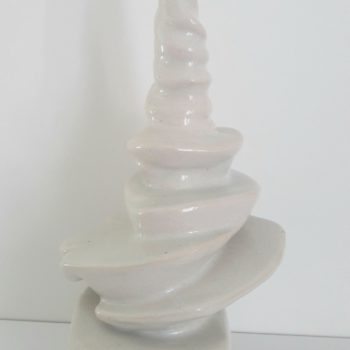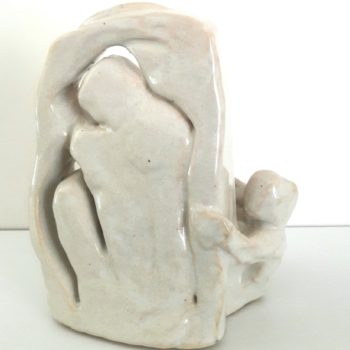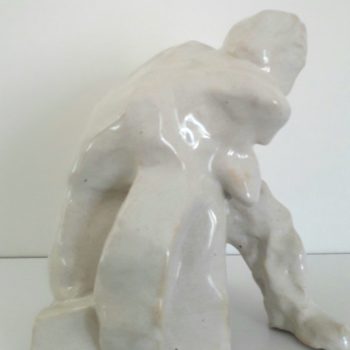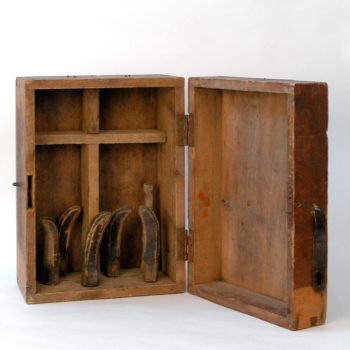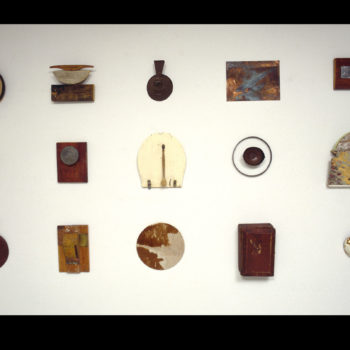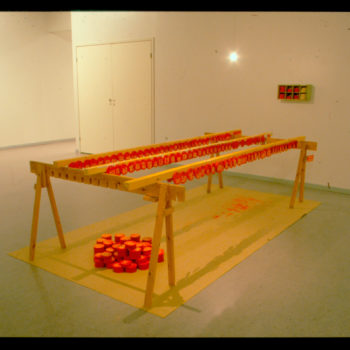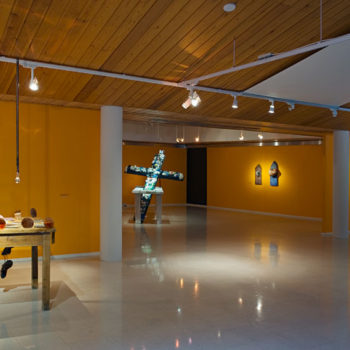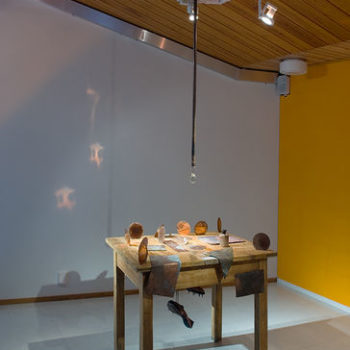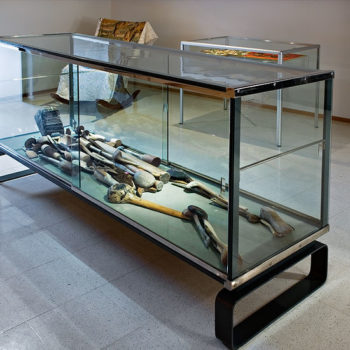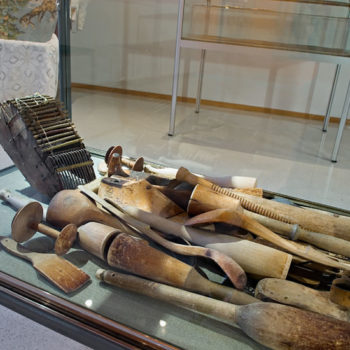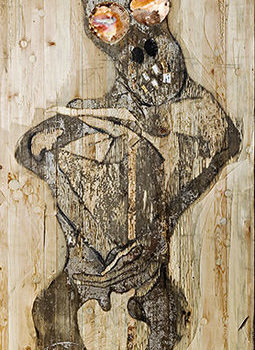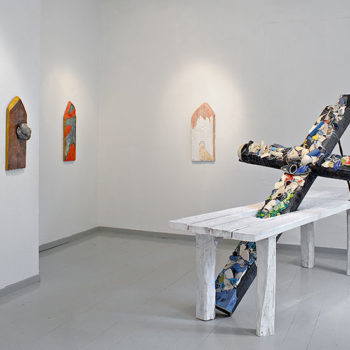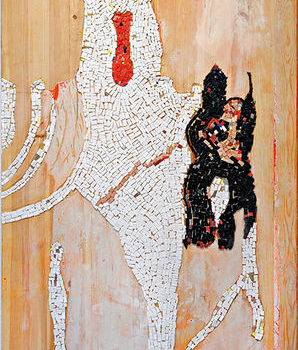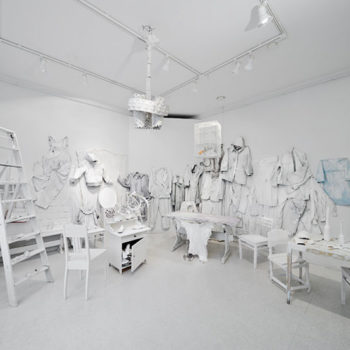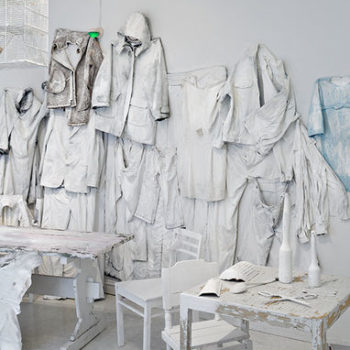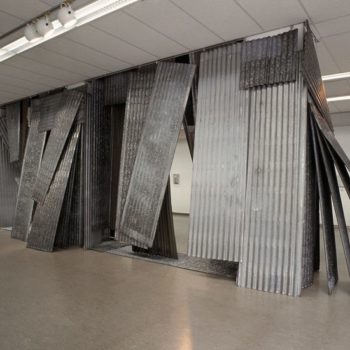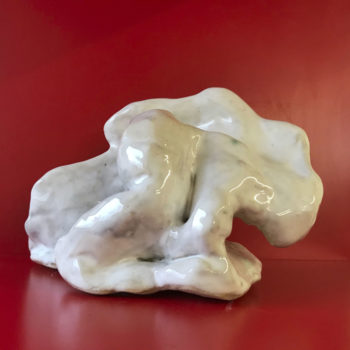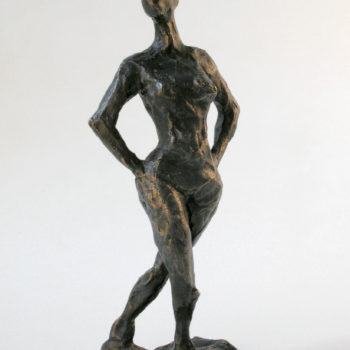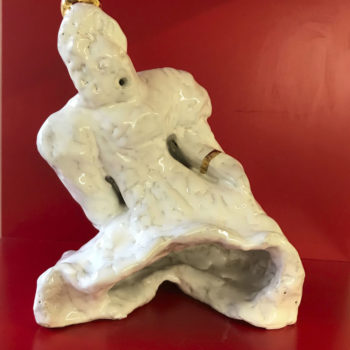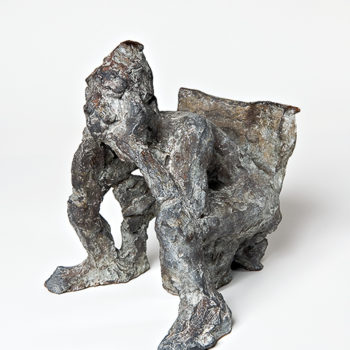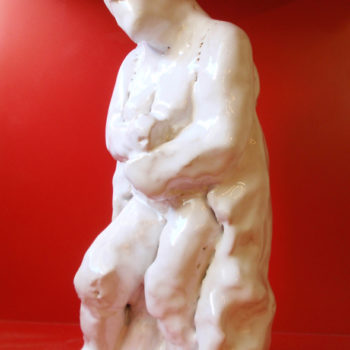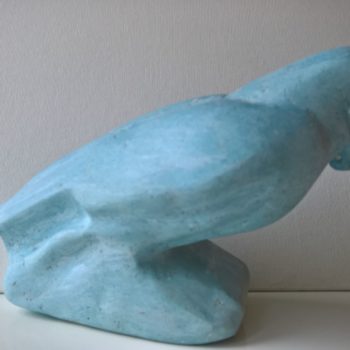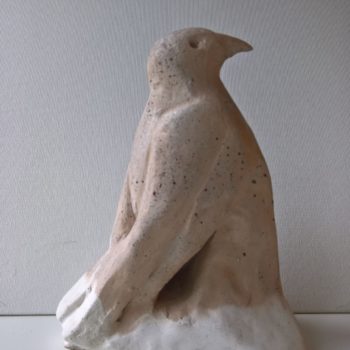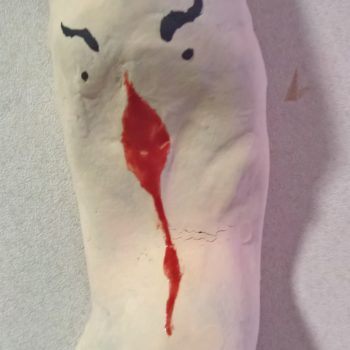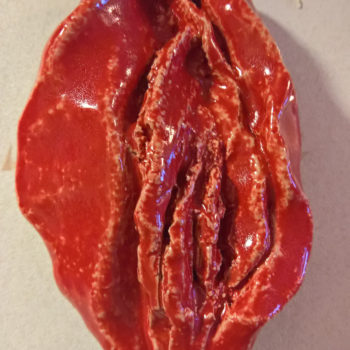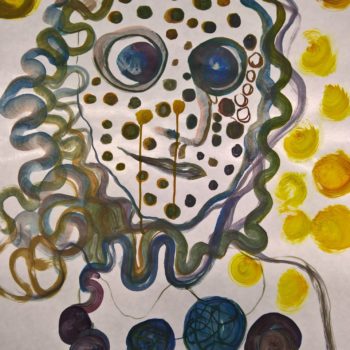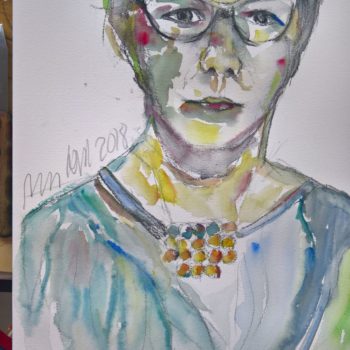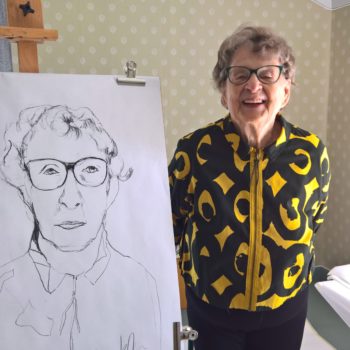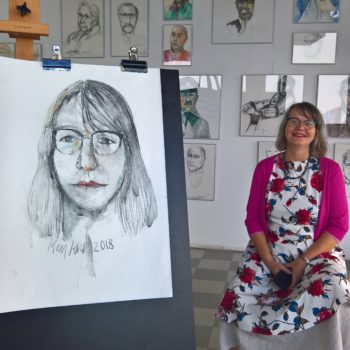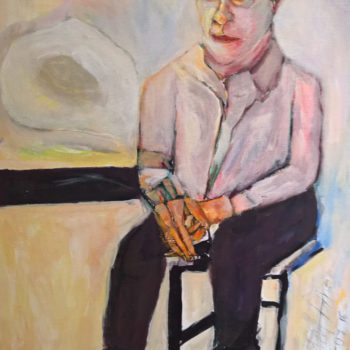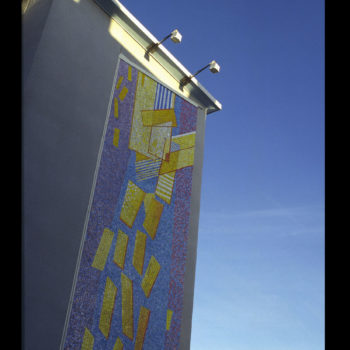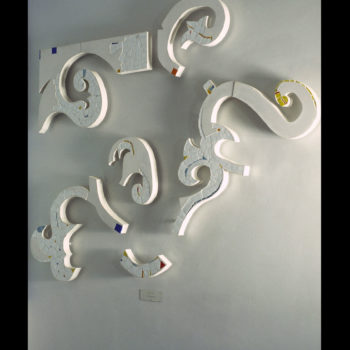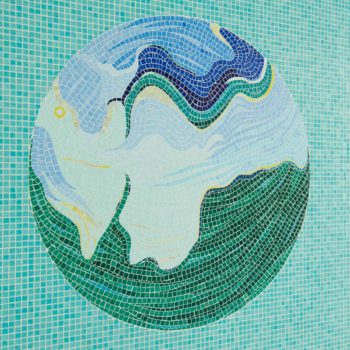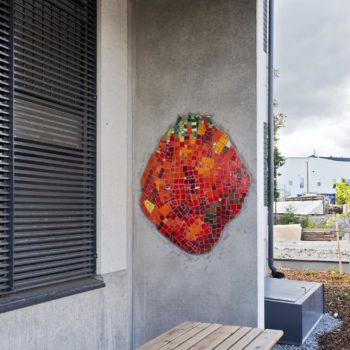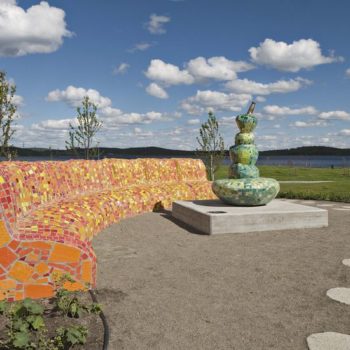Marja Kolu
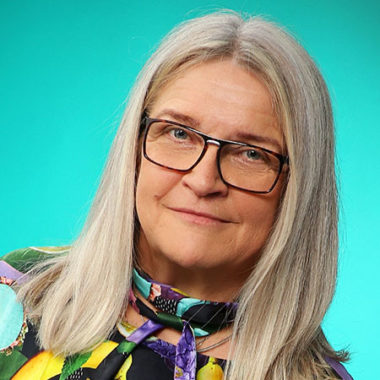
Basic information
b. 1956, Kemin mlk
Visual Artist
Residence: Korsholm
Contact information
Phone number: 0503410232
Email: marja.kolu@gmail.com
Artist’s Statement
Artist's statement
My installations are borne out of the signs of places, spaces and time; the oldest object collages are from 1988. Typical for my art is that I sculpt the space and build my works of the materially worthless second-hand objects and items. Often the objects find me. I am instinctively drawn towards certain types of materials; I'm not just hoarding objects randomly.
My first collages were created from the timber of the demolished houses of the old wooden town of Kuopio. Pieces of urban architecture merge with the rural life, not so far from the Kuopio market in the 1980's. Cow bells, horse's shaft bells, sheep bells, sleigh bells, brushes, hides, and tarred skis were the materials of my time travel works.
Popular items from different decades reflect the people and the cultural currents of their times. They place the artwork into a historical context and increase recognisability. For example, take the crimplene dresses of the 60's. Crimplene dresses were made especially for Russian export. I lived in the Soviet Union during 1987-1988, and in my works I have observed the rich and flavourful everyday life of our eastern neighbour. It was a time of drought - suchoye vremya - when Gorbachev tried to root out drinking at workplaces and on free time by banning alcohol sales almost completely in order to tackle the wide-spread alcoholism in the country. Saint Petersburg - called Leningrad at the time - was like one big performance or installation. An endless source of inspiration.
Poyekhali! - Off you go and explore the website!
My installations are borne out of the signs of places, spaces and time; the oldest object collages are from 1988. Typical for my art is that I sculpt the space and build my works of the materially worthless second-hand objects and items. Often the objects find me. I am instinctively drawn towards certain types of materials; I'm not just hoarding objects randomly.
My first collages were created from the timber of the demolished houses of the old wooden town of Kuopio. Pieces of urban architecture merge with the rural life, not so far from the Kuopio market in the 1980's. Cow bells, horse's shaft bells, sheep bells, sleigh bells, brushes, hides, and tarred skis were the materials of my time travel works.
Popular items from different decades reflect the people and the cultural currents of their times. They place the artwork into a historical context and increase recognisability. For example, take the crimplene dresses of the 60's. Crimplene dresses were made especially for Russian export. I lived in the Soviet Union during 1987-1988, and in my works I have observed the rich and flavourful everyday life of our eastern neighbour. It was a time of drought - suchoye vremya - when Gorbachev tried to root out drinking at workplaces and on free time by banning alcohol sales almost completely in order to tackle the wide-spread alcoholism in the country. Saint Petersburg - called Leningrad at the time - was like one big performance or installation. An endless source of inspiration.
Poyekhali! - Off you go and explore the website!
Current information
The idea for the exhibition Läski sulaa (the fat is melting) is rooted back to previous collaborations at Saarijärvi Museum in 2006 and Purnu, Orivesi in 2014.We are both born and raised in the countryside, Peter from Dalerö, Sweden and Marja from Keminmaa, Northern Finland. Both of our childhoods in the rural areas during the 1950s and 1960s was spent in a strict, religious environment singing psalms and listening to preaches. Our ambition to strive for change and challenge through art stems from these early experiences. We are both interested in people’s behaviors and choices behind their actions. How does the backround affect the person? What makes intolerance thrive? Why is it that so often racism is nesting in small country communities?
We are both trying to awaken a reaction in the public, to make people experience things differently and to observe the environment around us in a new way. We want to create joy, arise conversation – anger even. We have set ourselves outside as observers of the phenomena, questioning and thus seeing more.
The title of the exhibition is meant to be provocative, through which our installations explore difficult themes such as inbreeding in small communities, pedophilia, racism and even fanatic nationalism that is hidden under the hem of parochial folklore. We wish to challenge and make different conclusions than the ones that we were taught as children. We want to encourage people to do the same. Our art is humane and humoristic. It penetrates the skin and makes fat melt.
Marja Kolu (b. 1956) has been building her installations from found objects from flea markets and junkyards for over the past 30 years. She does not collect things to storage, but in her own words “the objects ask me to join me”. These already once used objects form a unity of time, place and material, a unity that is a statement on behalf of the common man – against the mainstream machinery and conspicuous consumption. The art works in the exhibition demonstrate timely topics: overeating and throw-away society. Kingsize GRILLGRILL consists of disposed grills. The nature falls ill, the globe gags and hurls. One part of world’s inhabitants suffers from starvation and another part is waiting for an obesity surgery. Meanwhile the advertisement for grilling equipment compete on size and performance.
Peter Johansson (b. 1964), a Swedish-Danish visual artist laughs at the clichés of his home region through his sculptors and installations. Dalarna in Sweden is presented to ecstatic tourists as a national romantic paradise of folkfore dances and red cottages. Johansson wants to make visible the other side of this idyll: the parochialism and racism. At the beginning of the 21st century Johansson has widened his approach to other similar nests of nationalism in different regions and different countries. At the same time he has focused on forgotten secrets of his family background. Irony and laughter move from private to public until the dialogue between these different aspects reaches dissonant cacophony in the red devil’s temple.
Text: Tarja Talvitie, MA, art researcher
The exhibition is supported by Suomalais-ruotsalainen kulttuurirahasto, The Swedish Cultural Foundation in Finland ja Regional Council of Ostrobothnia.
Picture: Detail from GRILLGRILL!, 2020 by Marja Kolu
https://sculptors.fi/en/exhibition/laski-sulaa-flasket-brinner/

